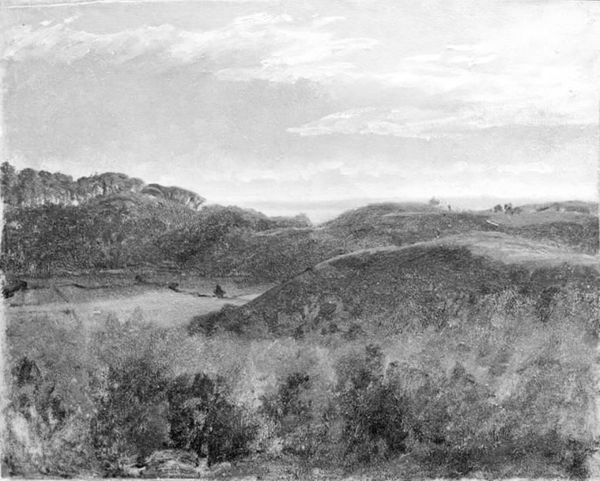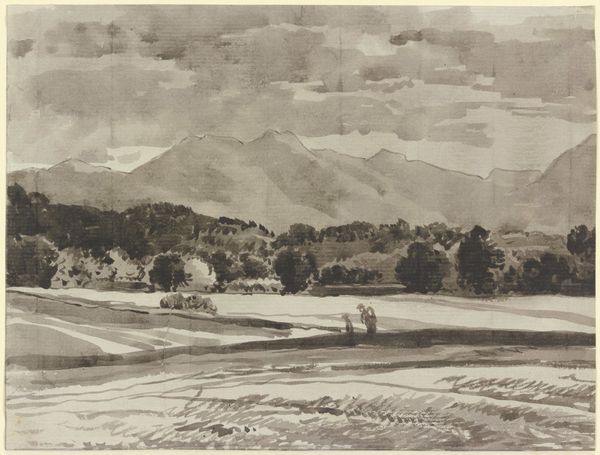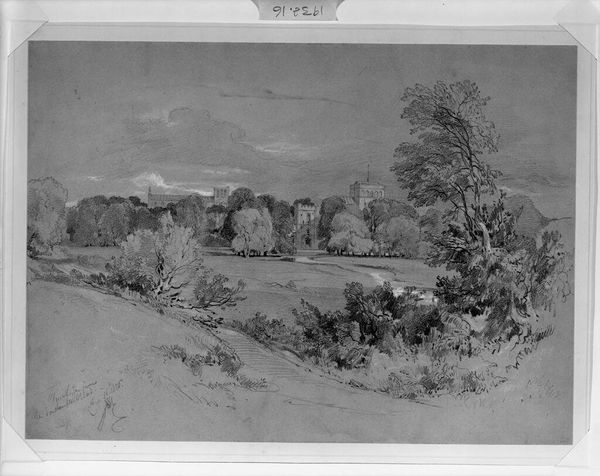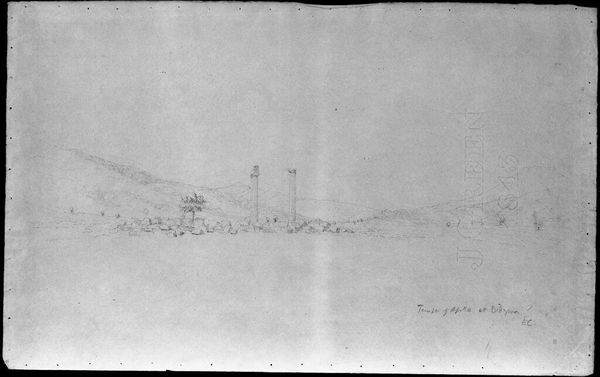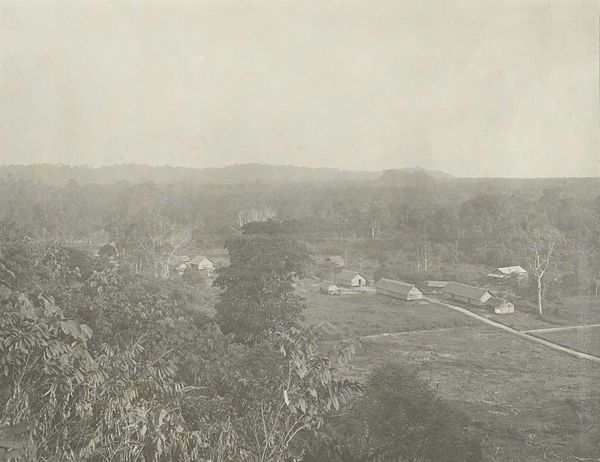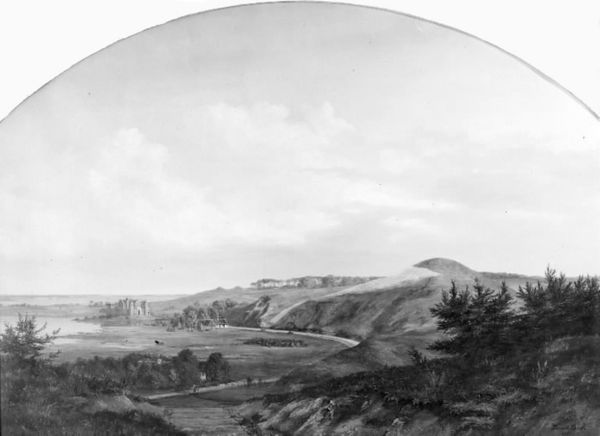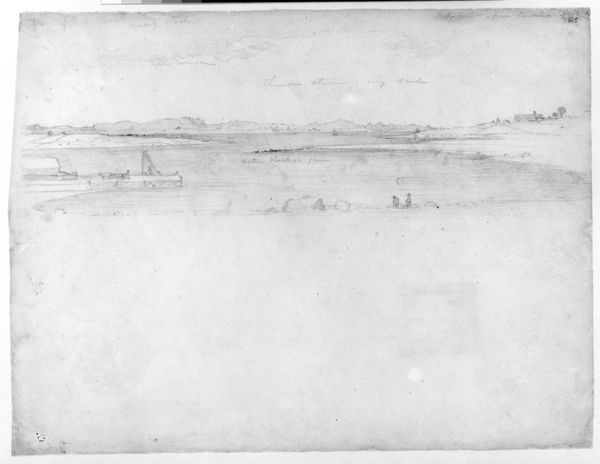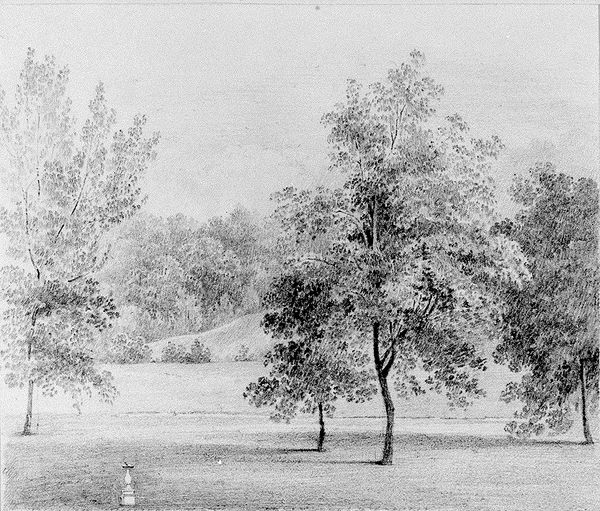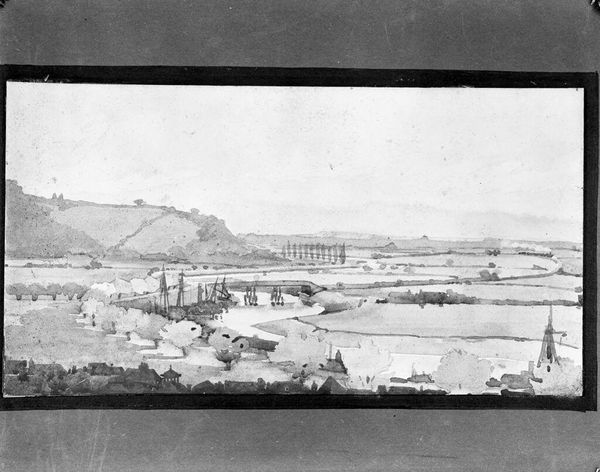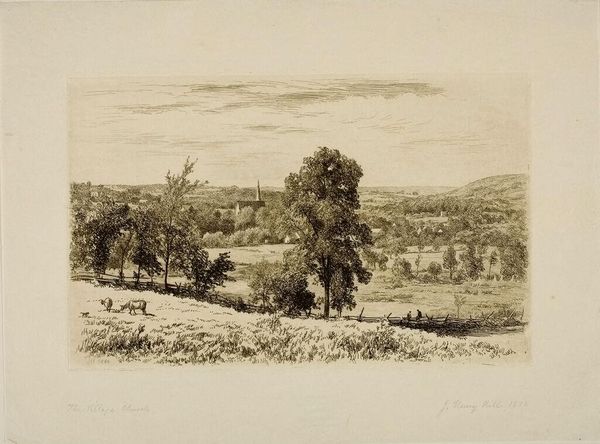
drawing, plein-air, paper, pencil, graphite
#
pen and ink
#
architectural sketch
#
tree
#
drawing
#
plein-air
#
pencil sketch
#
landscape
#
paper
#
pencil
#
hudson-river-school
#
graphite
#
academic-art
Dimensions: 16 3/16 x 24 1/16 in. (41.1 x 61.1 cm)
Copyright: Public Domain
Johann Hermann Carmiencke created this landscape drawing, "Hyde Park", in 1856. At first glance, one sees a tranquil vista of rolling hills, a placid lake reflecting the sky, and the distant, slumbering mountains. But it's the trees, aren't they, that draw our eye, framing the scene with their presence. Trees, throughout history, have served as potent symbols. In ancient cultures, they were the axis mundi, connecting the earthly and celestial realms. One recalls the Tree of Life, a motif echoed in countless traditions, representing growth, sustenance, and interconnectedness. Even the very form of a tree—its roots plunging into the earth, its branches reaching for the heavens—speaks to our own striving for connection and transcendence. Consider how this symbolism persists. From the sacred groves of classical antiquity to the Romantic poets’ fascination with nature, the tree stands as a testament to enduring life. It touches something primal within us, the sense of belonging to a natural order, a reminder of our own mortality and the cyclical nature of existence. It is a symbol that is constantly revisited, renewed, and reimagined.
Comments
No comments
Be the first to comment and join the conversation on the ultimate creative platform.
